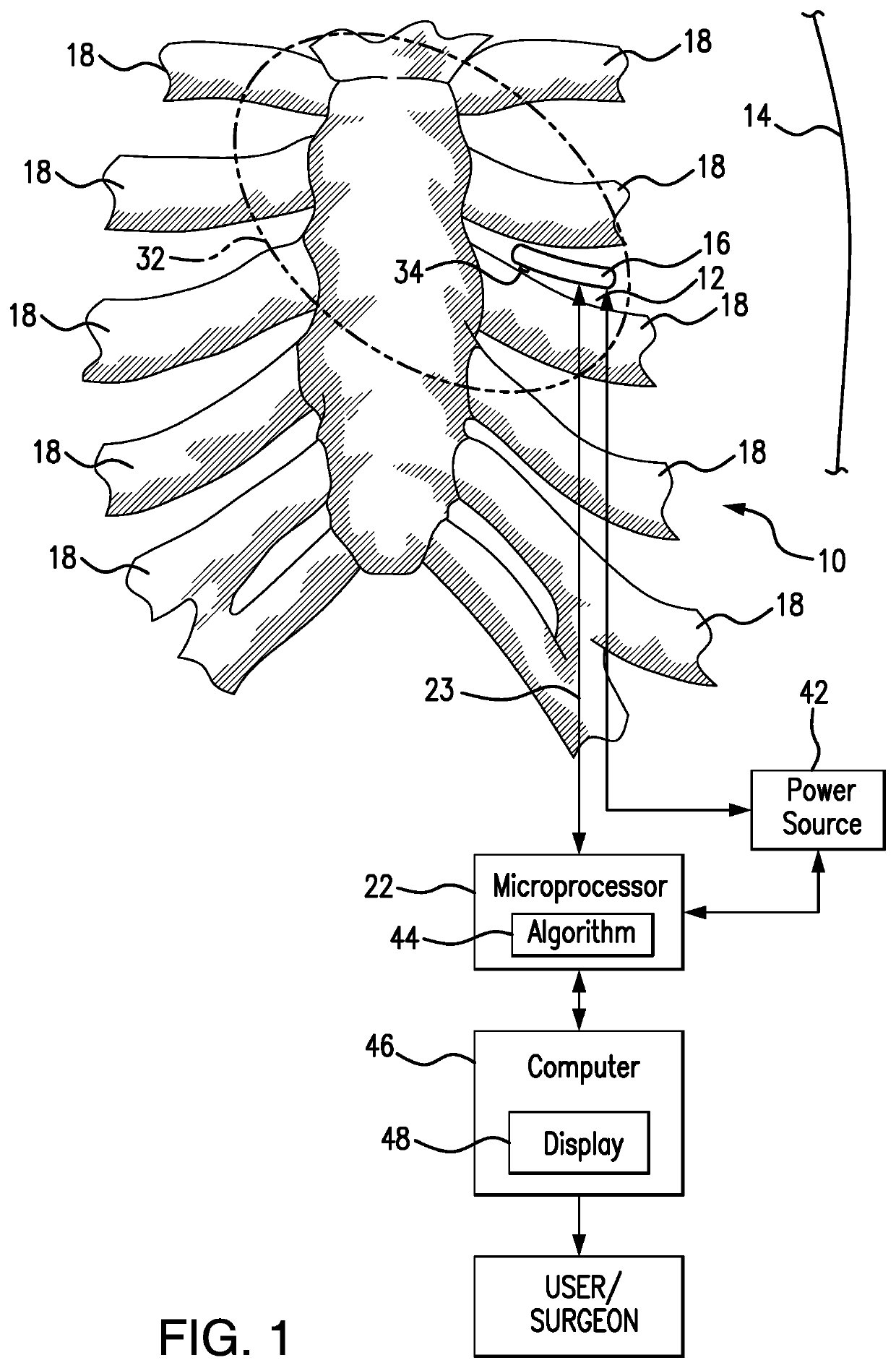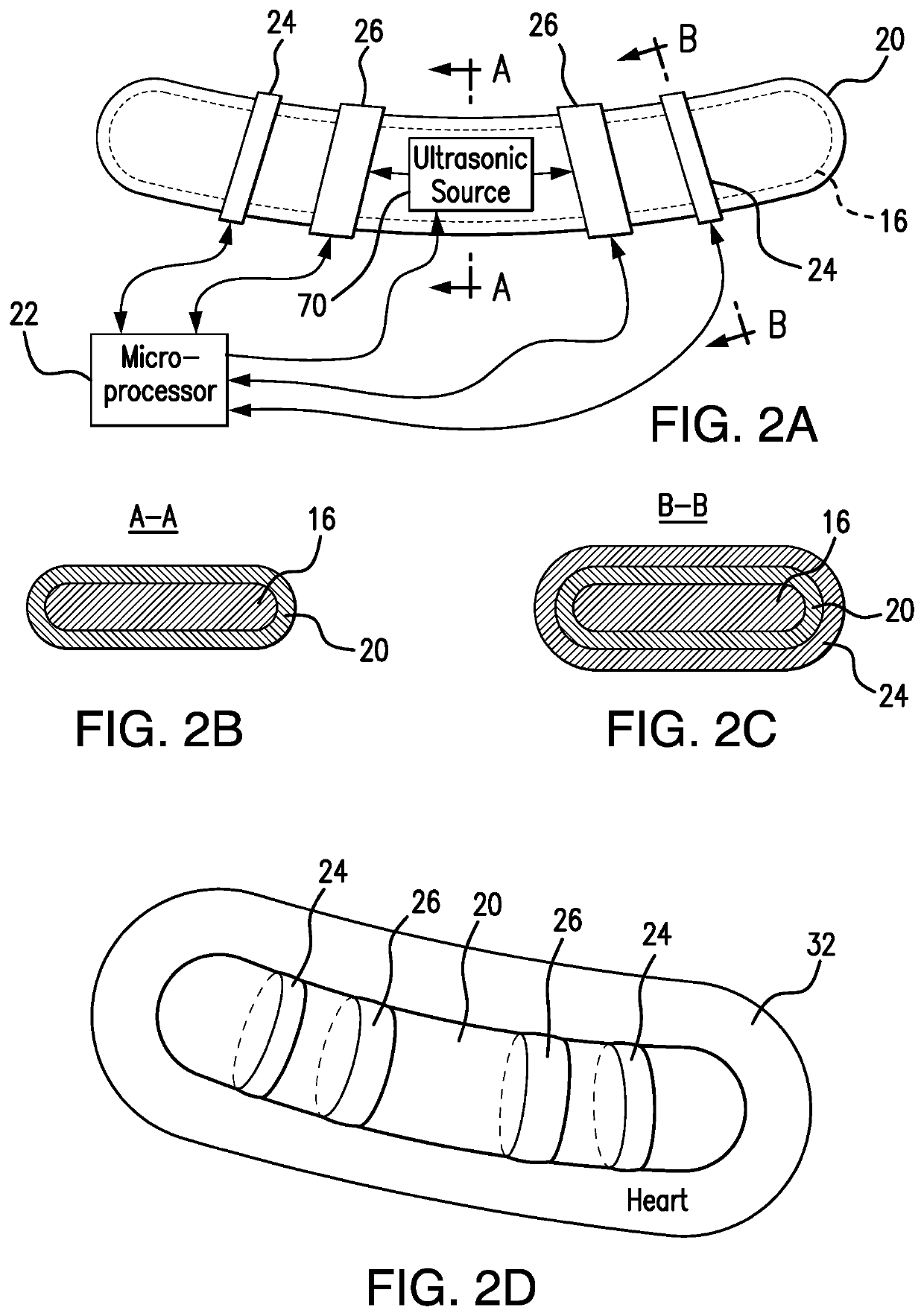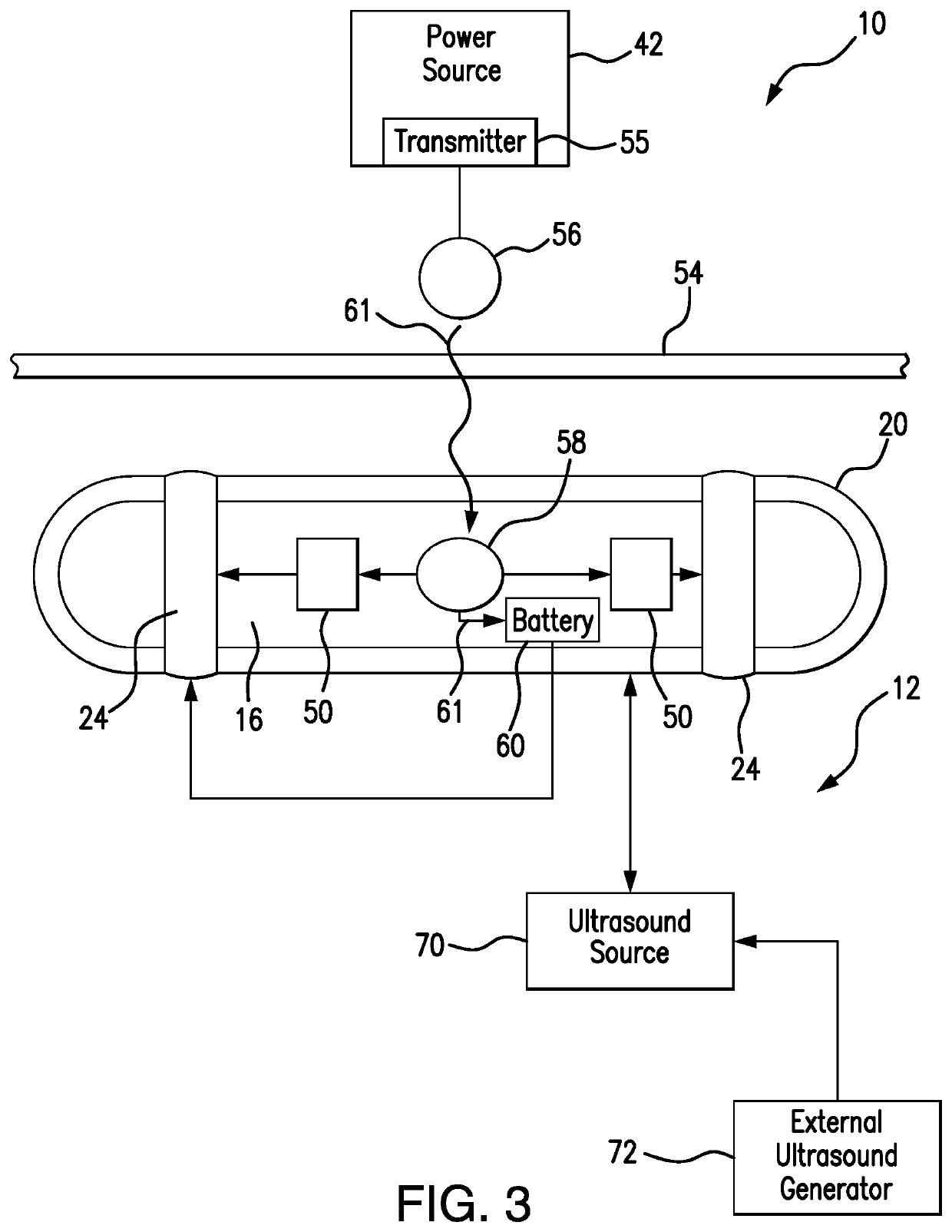Pacemaker system equipped with a flexible intercostal generator
a generator and intercostal technology, applied in the field of cardiac surgery, can solve the problems of pneumothorax, lead fracture, dislocation,
- Summary
- Abstract
- Description
- Claims
- Application Information
AI Technical Summary
Benefits of technology
Problems solved by technology
Method used
Image
Examples
Embodiment Construction
)
[0122]Referring now to FIGS. 1-4, a pacemaker system 10 is designed for generating electrical, acoustic (ultrasound, Doppler), infrared, and magnetic energy directed to a mammalian tissue and sensing such energy from the tissue of interest. The intercostal space 12 of a patient's chest wall 14 is selected as an implantation site in order to avoid interference from bony structures, such as ribs. The intercostal space location, specifically, the fourth or fifth intercostal space, is positioned in close proximity to the heart of a patient without intervening lung tissue (that otherwise may interfere with electromagnetic or ultrasonic signals traveling to and from the heart).
[0123]The subject system 10 includes a pacemaker generator 16 adapted to be received within the body of a patient, and particularly, in the intercostal region 12 located between patient ribs 18. The generator 16 is formed as a flexible elongated low-profile (near-flat)member applicable to dynamically changing sites...
PUM
 Login to View More
Login to View More Abstract
Description
Claims
Application Information
 Login to View More
Login to View More - R&D
- Intellectual Property
- Life Sciences
- Materials
- Tech Scout
- Unparalleled Data Quality
- Higher Quality Content
- 60% Fewer Hallucinations
Browse by: Latest US Patents, China's latest patents, Technical Efficacy Thesaurus, Application Domain, Technology Topic, Popular Technical Reports.
© 2025 PatSnap. All rights reserved.Legal|Privacy policy|Modern Slavery Act Transparency Statement|Sitemap|About US| Contact US: help@patsnap.com



